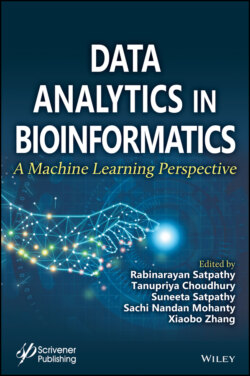Читать книгу Data Analytics in Bioinformatics - Группа авторов - Страница 61
3.1 Introduction
ОглавлениеWe wear smart watch to measure heart beat rate, hold smart phones that scan fingerprint and retina. All these are possible because of study and research on bioinformatics. Bioinformatics brings biological themes into computers. It is basically the integration of biology with computer science, mathematics and statistics. It analyzes the biological data such as genes, proteins, genomes, cells and deals with the computational management of ecological system, genetic engineering, medical information, drug development. This can be used for prediction, modeling, visualizing and designing.
Bioinformatics is a technique that uses computers to build mathematical model using different bioinformatics tools to acquire, manage and visualize biological data [1]. To infer relationship between components of complex biological system it develops software tools and methods to understand and analyze clinical data and biological data. This requires collecting and interpreting large chunks of biological data so as to gain information about some biological processes. In such situation computational biology is the actual program used to manipulate the data and bioinformatics puts those data to use.
Bioinformatics has a great significance in many areas of biology. In the sphere of genetics, it allows gene prediction, understanding the gene flow, gene sequencing, interpreting genomes and their observed mutations. For image and signal processing, bioinformatics techniques are applied in experimental molecular biology for mining useful information from large amount of raw data. In the text mining bioinformatics tools help to study and organize biological data of many biological literatures, which lead to the expansion of many biological and gene ontologies. It has a significant impact in the study of protein and gene expression and regulation. In system biology bioinformatics tools are used to analyse and catalogue the biological process and networks. It also assists to gain knowledge about the evolutionary characteristics of molecular biology for analysing, comparing and interpreting genetic and genomic data [2]. Bioinformatics helps to predict the 3D structure of different macromolecules such as RNA, DNA and proteins. It also assists in the analysis and simulation of different biomolecular interactions that are an important part of structural biology [3].
